In the past few years, the software development sphere has experienced revolutionary innovations and transformative changes. As the global software development market hurtles towards an estimated valuation of $507.2 billion, the transformative impact of emerging trends becomes increasingly evident. Understanding and adapting the latest software development trends is a strategic necessity for businesses aiming to sustain competitiveness and relevance.
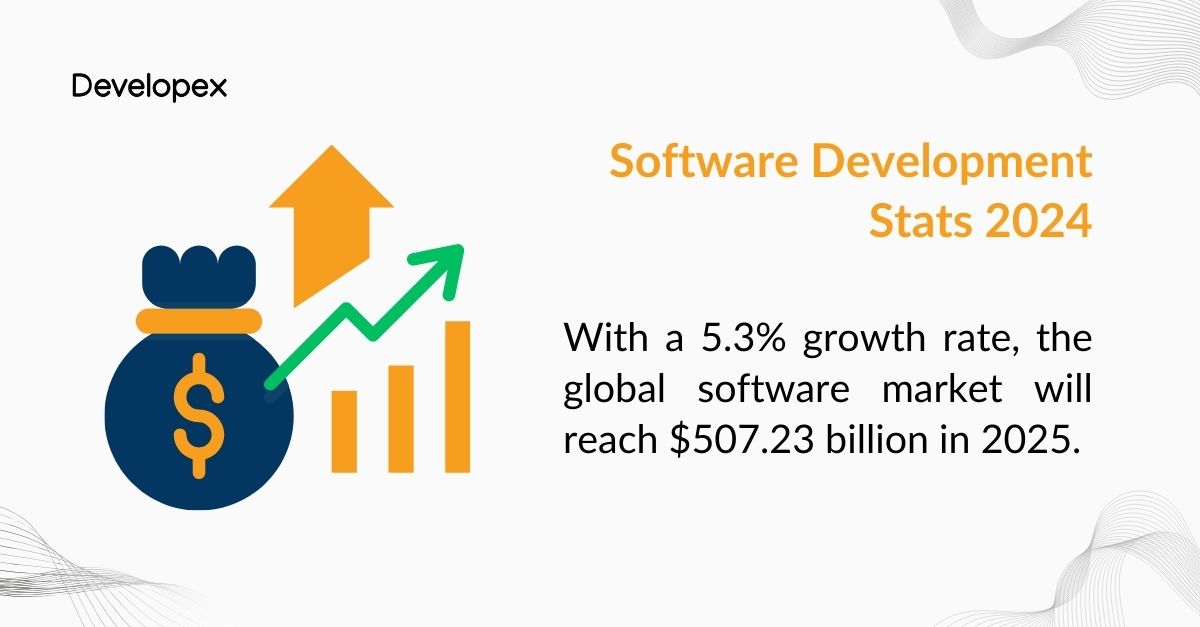
Why invest your time in exploring these trends? The advantages are multifaceted. Staying informed about the latest advancements positions your business to leverage state-of-the-art technologies, resulting in increased operational efficiency, elevated customer experiences, and a distinct market advantage. Whether you’re a CTO, project manager, or entrepreneur, grasping these trends is essential for maximizing the potential of your software projects and staying at the forefront of technological advancements.
So let’s overview the latest software development trends that will define the upcoming year.
- Trending Software Programming Languages
- Trend #1: Outsourcing as Cost-Effective Solution
- Trend #2: AI-Powered Development
- Trend #3: Internet of Things
- Trend #4: Progressive Web Applications (PWAs)
- Trend #5: Blockchain in Software Development
- Trend #6: Cybersecurity Innovations
- Trend #7: Low-Code/No-Code Development
- Final Thoughts
Trending Software Programming Languages
Software programming languages are constantly evolving to meet the demands of modern technology. The top trending languages are those that are gaining popularity among developers and are being widely used in the industry. With advancements in artificial intelligence, machine learning, and data science, certain languages have emerged as frontrunners in the tech world.
Python
Python is a high-level programming language that is renowned for its simplicity and readability. Widely used in web development, data science, and artificial intelligence, Python’s versatility has made it one of the most popular programming languages in the world.
One of the main reasons for Python’s popularity is its extensive library support, which allows developers to quickly build powerful applications without having to reinvent the wheel. From scientific computing to web scraping, Python’s libraries make it easy to tackle a wide range of programming tasks.
JavaScript
JavaScript remains a cornerstone of web development, with a vast ecosystem of frameworks and libraries that make it a powerful tool for creating dynamic and interactive websites. With the rise of frameworks like React, Angular, and Vue.js, JavaScript has become essential for creating dynamic and interactive web applications.
One of the key strengths of JavaScript is its ability to run on any browser, making it a universal language for web development. From adding interactivity to websites to building complex web applications, JavaScript’s flexibility and power make it a must-have skill for any developer working in the web development space.
As we look ahead to the future, it is clear that these programming languages will continue to play a crucial role in shaping the technology industry and driving innovation across various domains.
Rust
Rust is a systems programming language that is known for its focus on safety, speed, and concurrency. Originally developed by Mozilla, Rust has been gaining popularity among developers for its ability to prevent crashes and eliminate many common programming errors. Its syntax is similar to C++, making it relatively easy for programmers with experience in other languages to pick up.
One of the key features of Rust is its ownership system, which allows developers to write code that is both safe and efficient. By enforcing strict compile-time checks, Rust helps developers catch errors at the earliest stage possible, leading to more robust and secure software.
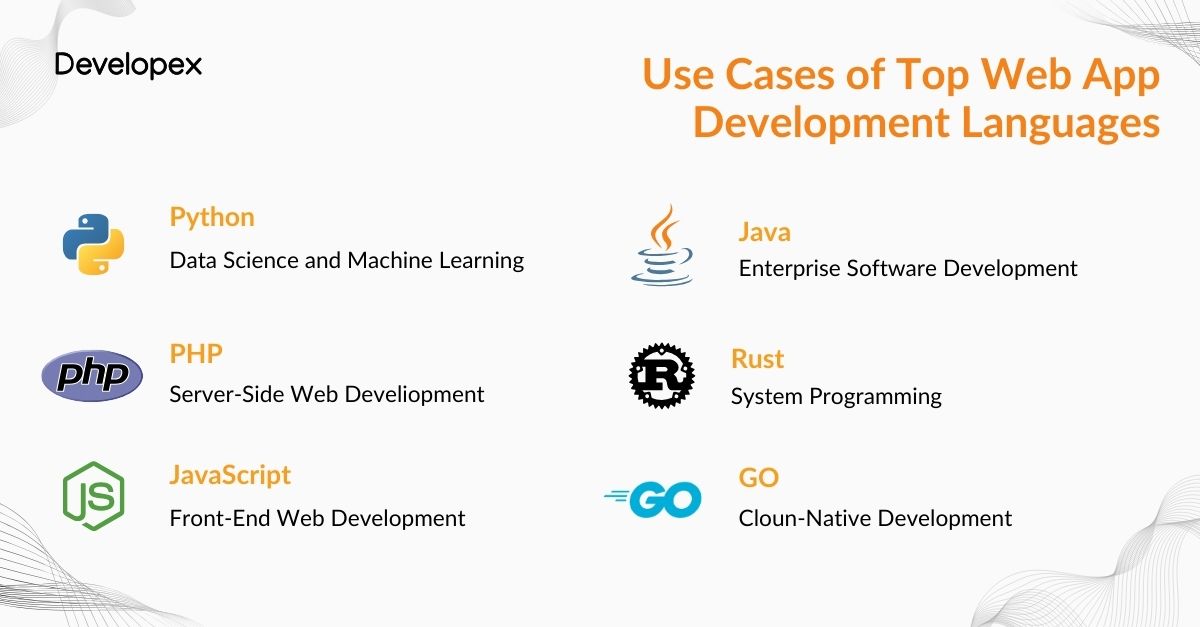
Trend #1: Outsourcing as Cost-Effective Solution
Outsourcing software development has become a growing trend due to several key factors. One of the main reasons is cost savings. By outsourcing their software development projects to offshore companies, businesses can significantly reduce their overhead expenses. This is because outsourcing allows companies to take advantage of lower labor costs in other countries, where skilled developers are available at a fraction of the cost compared to hiring locally.
Another factor driving the outsourcing trend is access to a global talent pool. By outsourcing software development, companies can tap into a diverse range of skills and expertise that may not be readily available in their local market. This enables businesses to work with highly qualified professionals who can deliver high-quality software solutions within a shorter time frame.
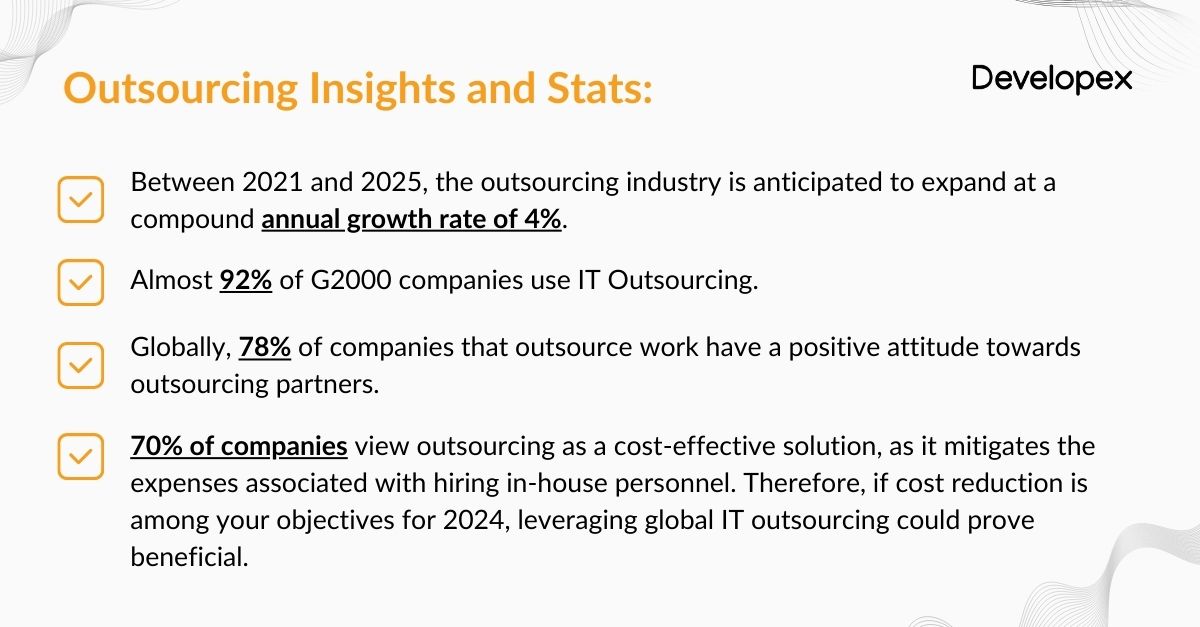
The Benefits of Outsourcing Software Development
Outsourcing software development offers several benefits for businesses looking to streamline their operations and reduce costs. Some of the key advantages include:
- Cost Savings: Outsourcing software development allows companies to access skilled developers at a lower cost, reducing overall project expenses.
- Access to Global Talent: By outsourcing, businesses can tap into a global talent pool and work with professionals from around the world.
- Faster Time to Market: Outsourcing software development can help businesses accelerate their product development cycles and bring new solutions to market faster.
- Focus on Core Competencies: By outsourcing non-core activities such as software development, businesses can focus on their core competencies and strategic initiatives.
Trend #2: AI-Powered Development
AI-powered development involves the use of AI and machine learning algorithms to automate and streamline various aspects of the software development lifecycle.
In recent years, AI has made significant strides in natural language processing (NLP), computer vision, and predictive analytics. Advanced AI models, such as GPT-4 and neural networks, are capable of generating code, identifying bugs, and optimizing performance with unprecedented accuracy.
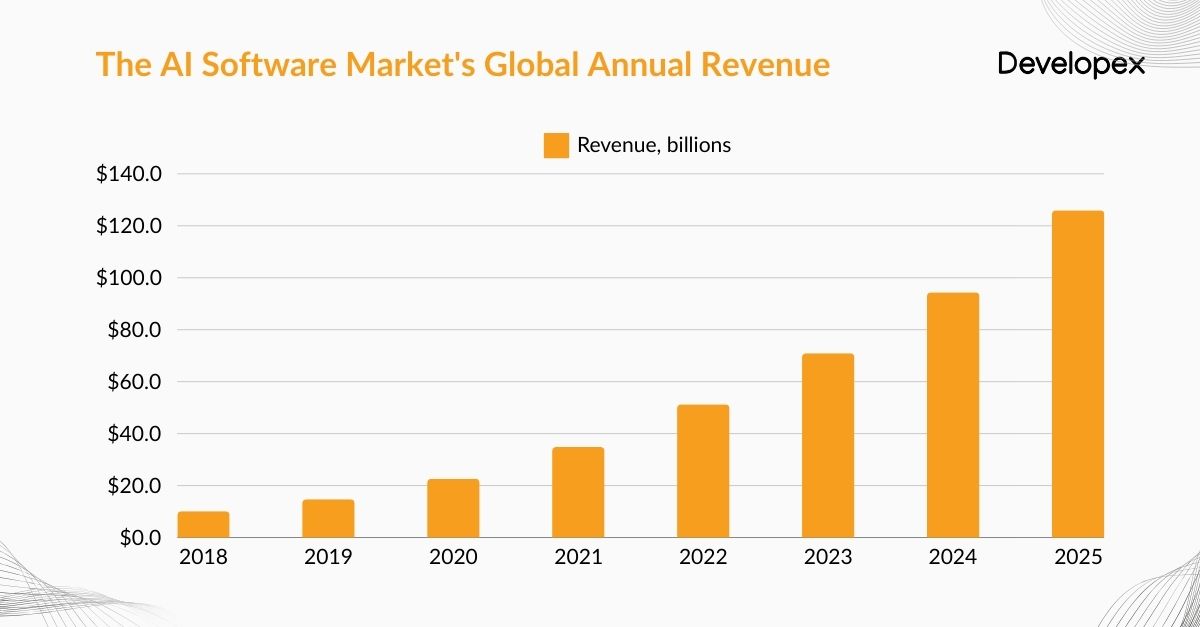
The future of AI in real applications and software is promising, with continued advancements expected in the coming years. From personalized healthcare diagnostics to autonomous delivery systems, AI-powered development will continue to drive innovation and shape the future of various industries.
Let’s explore key predictions regarding the future applications of AI:
Natural Language Processing (NLP) and Chatbots: AI-driven NLP enables natural interactions between users and software, while chatbots offer personalized assistance and automate customer support across industries.
Predictive Analytics: AI algorithms analyze extensive data to predict future trends, aiding decision-making in finance, marketing, and beyond.
Computer Vision: AI-powered computer vision transforms retail, manufacturing, and healthcare by enhancing efficiency and accuracy in tasks like quality control and facial recognition.
Autonomous Systems: AI drives the development of self-driving cars, drones, and robots, revolutionizing transportation, logistics, and manufacturing through autonomous decision-making.
Industries Harnessing AI-Powered Development
AI-powered development is being leveraged across a wide range of industries to drive innovation, efficiency, and competitiveness.
- In healthcare, AI is used for diagnosing diseases, predicting patient outcomes, and personalizing treatment plans.
- Financial services are utilizing AI for fraud detection, risk assessment, and algorithmic trading. In manufacturing, AI-powered systems are optimizing supply chain operations, predictive maintenance, and quality control.
- Retailers are harnessing AI for demand forecasting, personalized marketing, and customer service automation.
The possibilities are endless, and virtually every industry stands to benefit from the transformative power of artificial intelligence.
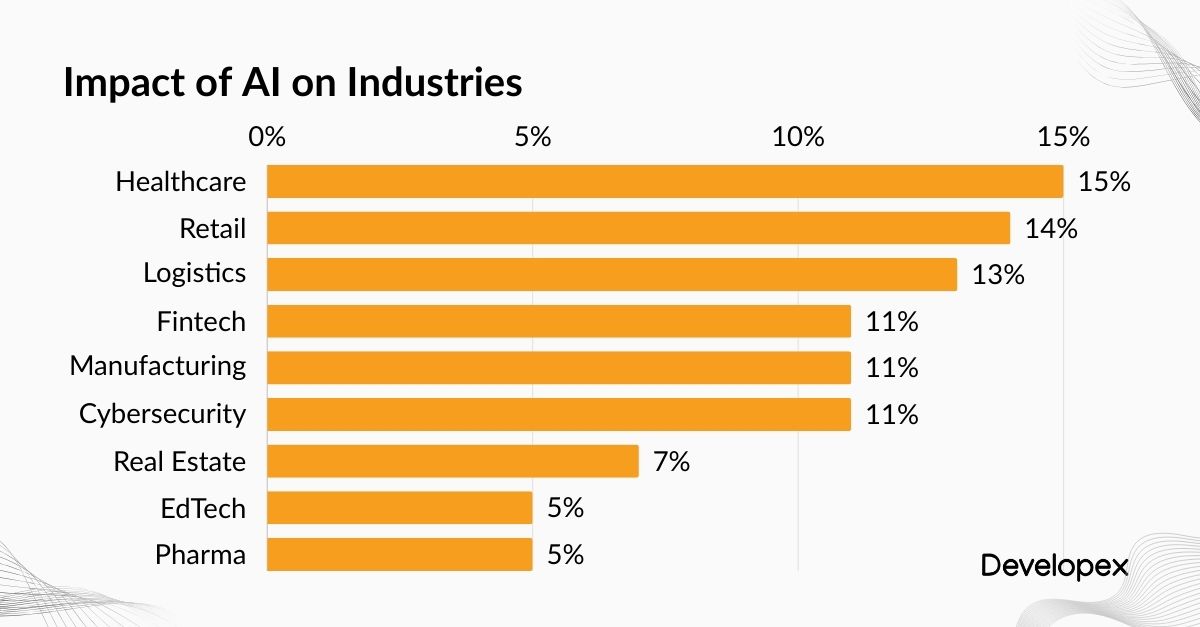
Integrating AI into Applications
AI integration in applications is typically achieved through APIs, SDKs, and development frameworks that allow developers to incorporate AI capabilities seamlessly. For example, companies like Google, Microsoft, and IBM offer pre-trained machine learning models that developers can easily integrate into their applications.
These models cover a wide range of use cases, including image recognition, natural language processing, sentiment analysis, and recommendation systems. By leveraging these AI services, developers can accelerate the development process, reduce time-to-market, and deliver more intelligent solutions to end-users.
Considerations for Investing in AI-Powered Development by Businesses
Investing in AI-powered development can drive significant value for businesses in terms of efficiency, innovation, and competitive advantage. By harnessing the power of artificial intelligence, organizations can automate repetitive tasks, uncover hidden insights in data, and enhance decision-making processes.
Moreover, AI-powered applications can deliver personalized experiences to customers, streamline operations, and unlock new revenue streams. As AI continues to evolve and mature, companies that embrace AI-powered development will be well-positioned to thrive in the digital age.

Trend #3: Internet of Things
The Internet of Things (IoT) continues to revolutionize various industries by connecting everyday devices to the internet, enabling data exchange and automation. In 2024, IoT remains a prominent trend in software development, driving innovation and transforming the way we interact with technology. Let’s explore the implications and advancements of IoT:
Smart Home Automation: IoT devices are increasingly integrated into homes, enabling automation of tasks such as lighting, heating, security, and entertainment. Smart home ecosystems, powered by IoT technology, offer convenience, energy efficiency, and enhanced security for homeowners.
Industrial IoT (IIoT): In the industrial sector, IoT facilitates the implementation of smart manufacturing processes and predictive maintenance strategies. IIoT sensors and devices collect real-time data from machinery and equipment, enabling proactive maintenance, optimizing production workflows, and reducing downtime.
Healthcare Applications: IoT is revolutionizing healthcare delivery by enabling remote patient monitoring, personalized treatments, and efficient management of medical resources. Wearable devices, IoT-enabled medical equipment, and telemedicine platforms enhance patient outcomes and streamline healthcare operations.
Smart Cities: IoT plays a crucial role in the development of smart cities, where interconnected devices and sensors enhance urban infrastructure, transportation systems, and public services. IoT applications in smart cities range from traffic management and waste management to environmental monitoring and energy efficiency.
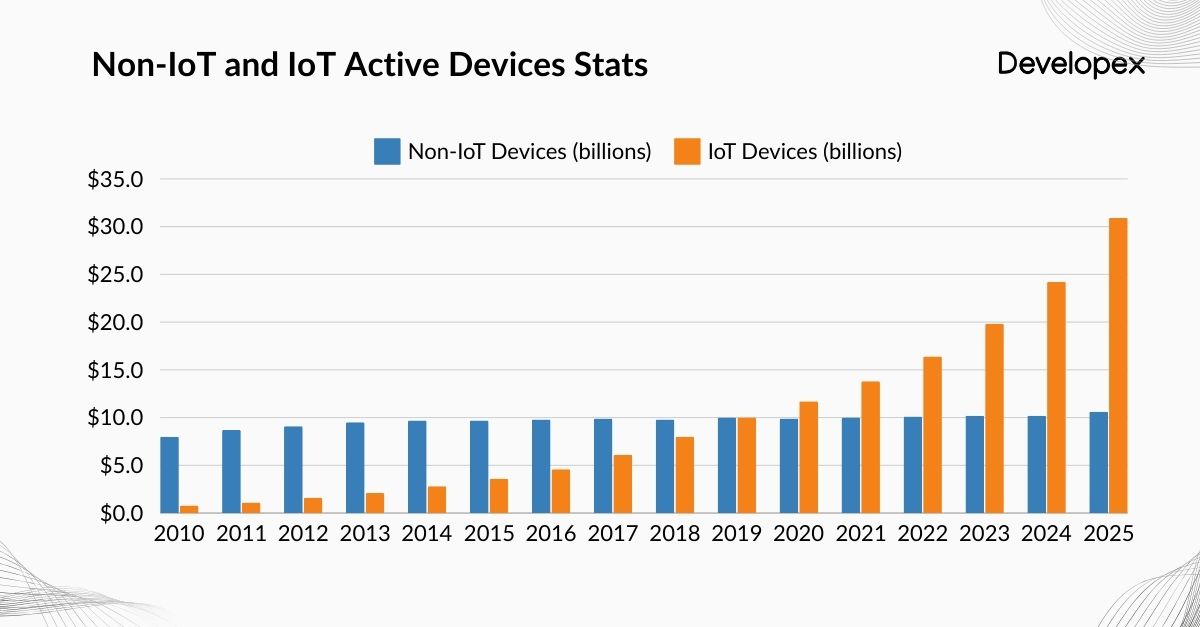
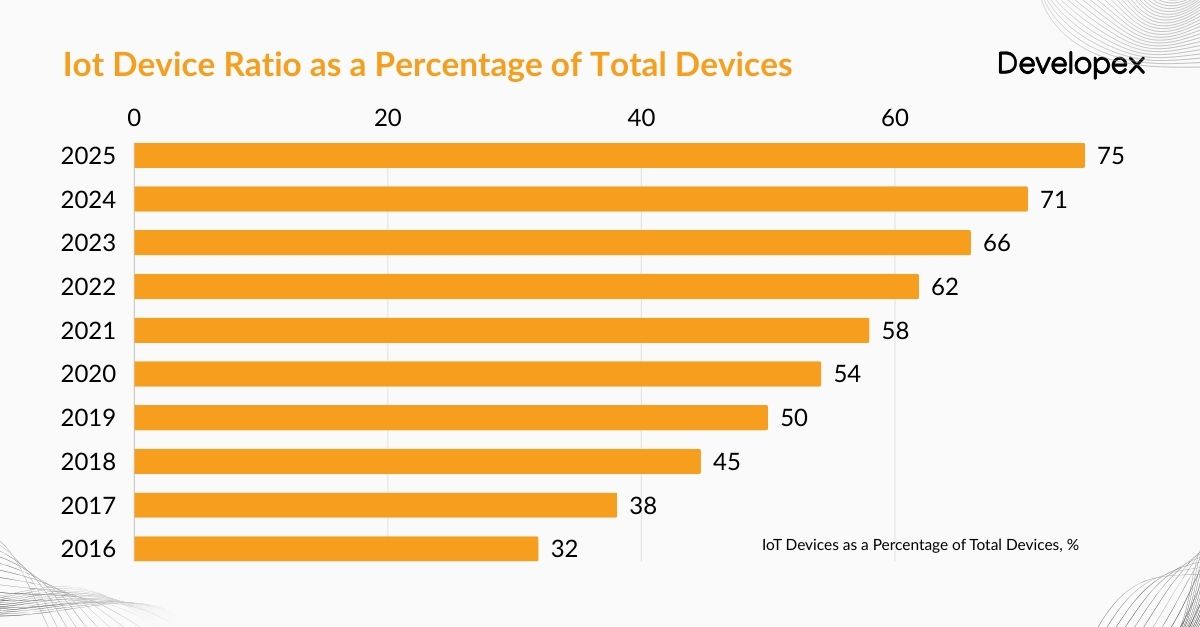
Uses of IoT in Software Development
Software developers are leveraging the power of IoT to create innovative solutions that address specific challenges and opportunities in various industries. One of the key uses of IoT in software development is for data collection and analysis. IoT devices are used to gather large amounts of data from connected devices, which can then be analyzed to extract valuable insights and drive informed decision-making.
Another common use of IoT in software development is for automation and control. IoT-enabled systems can be programmed to perform a range of tasks automatically, such as adjusting temperature settings in smart homes, optimizing energy consumption in buildings, or managing inventory in warehouses. This automation helps businesses streamline processes, reduce manual intervention, and improve operational efficiency.
Edge Computing and IoT
Edge computing plays a crucial role in optimizing IoT applications, especially in scenarios where low latency and high performance are essential. By processing data at the edge of the network, closer to where it is generated, edge computing reduces the need to send large volumes of data to centralized servers for processing. This not only reduces latency but also minimizes bandwidth requirements and enhances data privacy and security.
In the context of software development, edge computing enables developers to build applications that can operate efficiently in decentralized environments. These applications can leverage the computational power of edge devices, such as routers, gateways, and smart sensors, to perform tasks locally and deliver faster response times to users. This distributed computing model is particularly well-suited for IoT applications that require real-time data processing and decision-making.
Trend #4: Progressive Web Applications (PWAs)
PWAs combine the best of web and mobile applications, offering users the convenience of native app-like experiences directly through their web browsers. Built using modern web technologies like HTML, CSS, and JavaScript, PWAs leverage service workers to enable offline functionality, push notifications, and fast loading times, providing a responsive and engaging user experience.
Key Features and Benefits:
As PWAs continue to gain traction, they represent a significant opportunity for businesses to elevate their online presence and deliver exceptional user experiences.
- Cross-Platform Compatibility: PWAs work seamlessly across various devices and platforms, eliminating the need for separate development efforts for different operating systems.
- Offline Functionality: PWAs utilize service workers to cache content and enable offline access, ensuring uninterrupted user experiences even in low or no connectivity environments.
- Improved Performance: With their lightweight architecture and optimized resource loading, PWAs boast faster loading times and smoother performance compared to traditional web applications.
- Enhanced Discoverability: PWAs can be indexed by search engines and shared via URLs, improving discoverability and enabling users to easily access and share content.
- Engagement and Retention: PWAs support push notifications, enabling businesses to re-engage users with timely updates and notifications, fostering long-term user retention.
Applications Across Industries:
- E-Commerce: PWAs empower e-commerce businesses to deliver immersive shopping experiences, driving conversions and reducing cart abandonment rates.
- Media and Publishing: PWAs enable media companies to deliver rich content experiences across devices, engaging users with personalized news feeds and multimedia content.
- Travel and Hospitality: PWAs revolutionize the travel industry by offering seamless booking experiences, real-time itinerary updates, and interactive destination guides.
- Finance and Banking: PWAs provide secure and user-friendly banking experiences, enabling customers to access account information, make transactions, and receive alerts on the go.
As businesses embrace the era of digital transformation, PWAs emerge as a powerful tool to deliver fast, engaging, and accessible experiences to users worldwide. By harnessing the capabilities of PWAs, businesses can stay ahead of the curve and drive growth in the competitive digital landscape of 2024. Join us as we explore the transformative potential of PWAs in shaping the future of software development.
Trend #5: Blockchain in Software Development
Blockchain technology has transcended its origins in cryptocurrency to become a disruptive force in software development. As we progress into 2024, the adoption of blockchain continues to expand, reshaping traditional approaches to data management, security, and transparency.
Blockchain technology, characterized by its decentralized and immutable ledger, offers a paradigm shift in how data is stored, verified, and shared. By providing a tamper-proof record of transactions, blockchain enhances security, eliminates intermediaries, and fosters trust among participants.
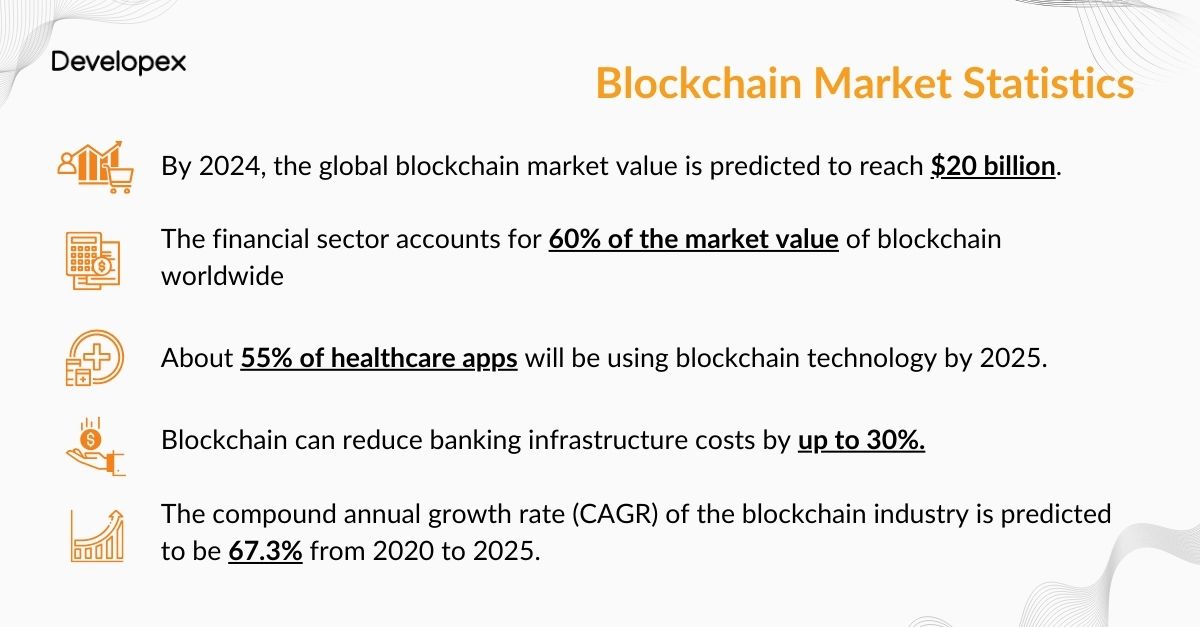
Here’s a closer look at the role of blockchain in current software development trends:
Smart Contracts: Blockchain facilitates the execution of smart contracts, self-executing agreements with predefined rules and conditions. Smart contracts automate processes, reduce transaction costs, and enhance transparency in various industries, including finance, real estate, and supply chain management.
Decentralized Applications (DApps): Blockchain enables the development of decentralized applications (DApps), which operate on a peer-to-peer network rather than a centralized server. DApps offer increased security, censorship resistance, and data integrity, revolutionizing sectors such as gaming, social media, and healthcare.
Supply Chain Management: Blockchain enhances transparency and traceability in supply chains by providing a secure and immutable record of product movements, from sourcing to distribution. This transparency reduces fraud, ensures product authenticity, and enhances accountability across the supply chain.
Identity Management: Blockchain enables secure and decentralized identity management solutions, empowering individuals to control their digital identities without relying on centralized authorities. This enhances privacy, reduces identity theft, and facilitates secure access to digital services.
Data Security and Privacy: Blockchain strengthens data security and privacy by encrypting data and providing cryptographic verification of transactions. This mitigates the risk of data breaches, unauthorized access, and tampering, making it an attractive solution for sensitive applications such as healthcare records and financial transactions.
Tokenization of Assets: Blockchain enables the tokenization of assets, representing real-world assets such as real estate, art, or commodities as digital tokens on a blockchain. This facilitates fractional ownership, liquidity, and efficient transfer of assets, unlocking new investment opportunities and democratizing access to financial markets.
Embracing blockchain as a top software development trend positions businesses to stay ahead of the curve and harness the full potential of decentralized technologies.
Trend #6: Cybersecurity Innovations
In today’s interconnected digital landscape, robust security measures are essential to protect against cyber threats such as data breaches, ransomware attacks, and malware infections. For software development service providers, implementing strong security protocols is not just a best practice; it’s a necessity to ensure the integrity, confidentiality, and availability of data and systems. With cyber attacks becoming more sophisticated and prevalent, organizations must prioritize cybersecurity throughout the development lifecycle to mitigate risks and safeguard sensitive information.
In 2024, several cybersecurity trends are shaping the landscape and influencing software development practices. Let’s delve into some of the key innovations in cybersecurity:
Zero Trust Architecture: Zero Trust is an evolving security model that emphasizes the principle of “never trust, always verify.” It assumes that threats can originate both externally and internally, requiring continuous verification of users, devices, and applications before granting access to resources.
AI-Powered Threat Detection: AI and machine learning are increasingly being utilized to enhance threat detection capabilities. AI-powered algorithms can analyze vast amounts of data in real-time, identify patterns indicative of cyber attacks, and respond proactively to mitigate risks.
Multi-Factor Authentication (MFA): MFA is becoming a standard security practice to strengthen authentication mechanisms beyond passwords. By requiring multiple forms of verification, such as biometrics or one-time passcodes, MFA helps prevent unauthorized access to systems and data.
Cloud Security: With the widespread adoption of cloud computing, securing cloud environments has become a top priority for organizations. Cloud security solutions offer features such as encryption, access controls, and threat detection to protect data and applications hosted in the cloud.
Zero-Day Vulnerability Management: Zero-day vulnerabilities, which are unknown or unpatched vulnerabilities in software or hardware, pose significant risks to organizations. Proactive vulnerability management strategies, such as continuous monitoring, threat intelligence, and patch management, help mitigate the risks associated with zero-day exploits.
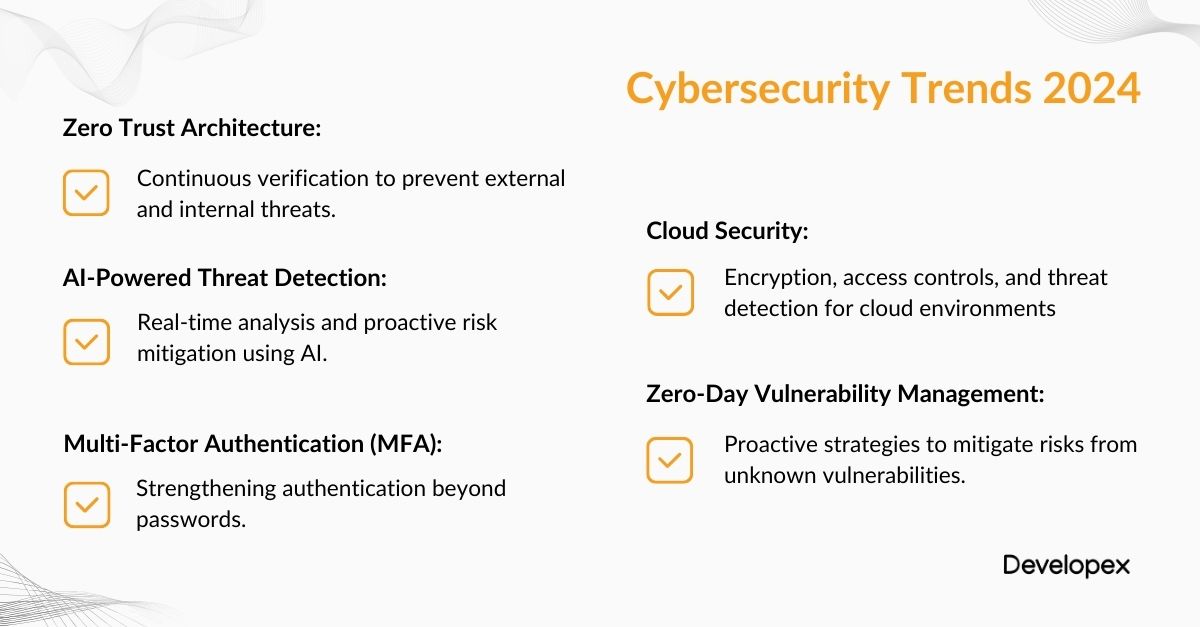
By staying abreast of these emerging trends and adopting proactive security measures, organizations can strengthen their cybersecurity posture and mitigate the risks posed by evolving threats.
Trend #7: Low-Code/No-Code Development
In recent years, low-code and no-code development platforms have gained significant traction in the software development landscape, enabling users with varying levels of technical expertise to build applications quickly and efficiently. This trend is reshaping the way software is developed and democratizing access to application development tools. Let’s explore the key aspects of low-code/no-code development:
Rapid Application Development: Low-code/no-code platforms empower users to create applications with minimal coding required, significantly reducing development time and costs. This accelerated development process allows organizations to respond swiftly to changing business needs and market demands.
Accessibility and Inclusivity: By eliminating the need for extensive coding knowledge, low-code/no-code platforms make application development accessible to a broader audience, including citizen developers, business analysts, and domain experts. This fosters collaboration between IT and business units, driving innovation and streamlining development workflows.
Visual Development Interfaces: Low-code/no-code platforms typically feature intuitive visual development interfaces, allowing users to design, configure, and deploy applications using drag-and-drop components and visual workflows. This visual approach simplifies the development process and enables rapid prototyping and iteration.
Integration Capabilities: Many low-code/no-code platforms offer robust integration capabilities, allowing users to seamlessly connect with existing systems, APIs, and data sources. This enables organizations to leverage their existing infrastructure and extend the functionality of their applications without extensive custom coding.
As low-code/no-code development continues to evolve, its adoption is expected to grow across industries. By embracing low-code/no-code platforms, businesses can accelerate their application development efforts, enhance collaboration, and achieve faster time-to-market for their software solutions.
Final Thoughts
2024 brings forth a myriad of transformative trends that are reshaping the way we conceive, build, and deploy software solutions. From the rise of artificial intelligence and blockchain to the democratization of development through low-code/no-code platforms, these trends underscore the relentless march of innovation and the need for organizations to adapt and evolve.
At Developex, we are committed to staying at the forefront of the latest development trends and innovations. By continuously monitoring and adapting to the evolving landscape of software development, we ensure that our clients benefit from cutting-edge solutions that meet their evolving needs and drive business success. Contact us today to explore how we can help you leverage the latest trends and technologies to drive your business forward.






